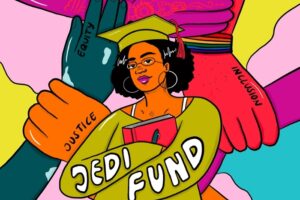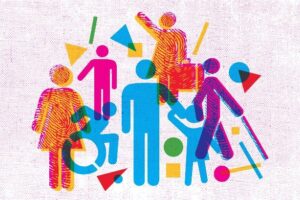Making Diversity and Inclusion Public - Or, How I got to design a course about D&I public outreach
Looi van Kessel is one of the recipients of a JEDI grant to promote diversity and inclusion in education. In this blog post he will discuss his plans for a course that teaches students to organize public events around D&I topics.
One of the most wonderful things about teaching at Leiden University is that I get to have conversations with students with different backgrounds, interests, and experiences. From these conversations, I am able to stay in touch with their ideas and wishes for the future, or to learn about their concerns and fears – which play a great role in the ways in which students choose to become social actors in and around the university. It is this decision of students to become socially active that inspires my teaching and continues to inspire my own activism.

In comes the JEDI fund. Because that’s why I am writing this blog post and why am I starting out with this paragraph about my teaching philosophies and my swooning over the role students play in this. I am writing this post because I am one of the lucky recipients of a grant for my teaching project “Making Diversity and Inclusion Public”, sponsored by the Justice, Equity, Diversity and Inclusion (JEDI) fund, a fund of the Diversity and Inclusion office at the Humanities Faculty that provides small grants for teaching initiatives that contribute to the faculty’s broader D&I goals and which emphasize an inclusive learning environment. Together with six other projects (see here for a detailed description of these projects), I get the opportunity to start an exciting project that involves student-led activism and coalition building with social partners, and provides students with the skills for public outreach and social organizing.
The case of the curious students
But let me first explain how I got here. Part of my position as Assistant Professor at LUCAS is that I get to coordinate the minor Gender and Sexuality in Society and Culture, a minor program that attracts many students who have an interest in questions of diversity and inclusion beyond those that revolve around gender and sexuality. While teaching a course in this minor last semester, three students approached me and a colleague about an event they wanted to organize.

My colleague had just had a class with them in which they discussed the societal impact of pornography – its effects on self-image, social fantasies about what ideal bodies should look like, and types of sex that are deemed desirable or not. The students wanted to continue the discussions that were started in class, but also tie these discussions to the screening of clips from queer and feminist pornographic creators to provide a counterbalance to the images that are fed to us through mainstream pornography. In short, they wanted to organize an afternoon in which they could bring the theoretical insights from the classroom in conversation with the actual practice of pornography.
Bridging theory and practice
I hear this wish more often from students: to be able to put their theoretical knowledge into practice. The minor program often works with conceptual language that is very useful to analyze structures of oppression or the production of a gendered self, but this theoretical knowledge doesn’t always suffice when trying to enter a societal debate. It is one thing to learn about gender performativity, it’s an altogether different thing to engage with people who are marginalized because of their gender identity or expression. It is one thing to learn about intersectionality, it is an altogether different thing to build actual intersectional coalitions and engage in the sometimes messy work of activism across different marginalized groups.
Needless to say, I applauded this initiative of my students and supported them as much as I could by securing classrooms for the viewing and discussion and by having conversations about how they could ensure that all participants of the event would feel safe to talk about their own experiences or reactions to the clips we would watch. In the end, the students set up a fantastic event with about fifteen participants who all felt comfortable enough to talk about how they experienced these clips, and what it means to encounter images from either mainstream pornography or pornography that is queer, feminist, sex positive and body positive.

My JEDI project
And that brings me to the project for which I have received a JEDI grant. Inspired by my students’ efforts and by the role I could play to ensure a successful and safe event, I started to dream about other ways in which I can assist students who wish to connect the theoretical conversations we have in the classroom with their activism and social organizing outside of it. Thus, with the funding I have received, I am going to set up a pilot project for a course in which students get to organize public outreach events, such as debates or film screenings, around a D&I topic of their choice – either because they feel strongly about a specific issue, or because they want to learn more about others.
The idea for this course is to organize a series of workshops in which the students have conversations with various social organizations (think for example of the various D&I networks at Leiden University, but also social actors from outside of Leiden). In these workshops the students learn how to set up events that aim to advance debates around diversity and inclusion, while also learning how to build coalitions across different social groups. Eventually, it is my aim to bring together the theoretical frameworks that we discuss in the classroom with the skills necessary to put this theory into practice.
After all, if we really want to make a change in this world, we need to move out of the university and into the streets!
© Looi van Kessel and Leiden Arts in Society Blog, 2022. Unauthorised use and/or duplication of this material without express and written permission from this site’s author and/or owner is strictly prohibited. Excerpts and links may be used, provided that full and clear credit is given to Looi van Kessel and Leiden Arts in Society Blog with appropriate and specific direction to the original content.



0 Comments